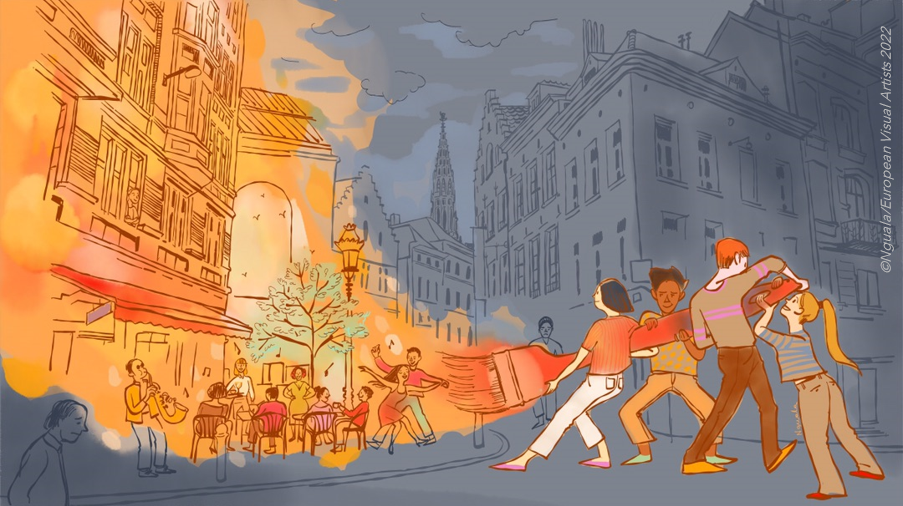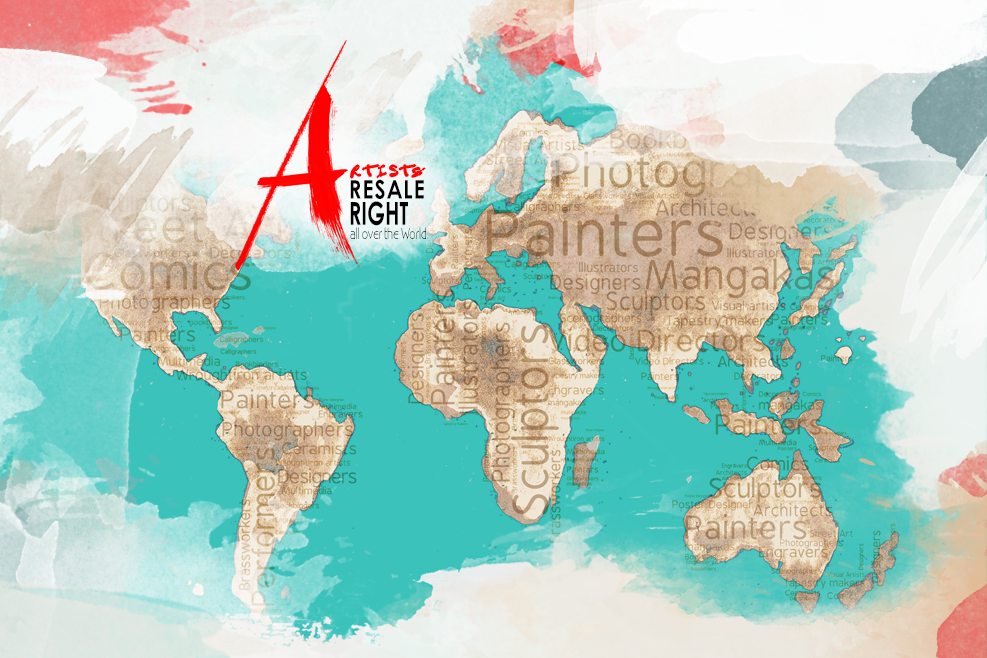
| 1886 | The Berne Convention is adopted in Berne Switzerland, and becomes the first treaty designed to defend authors rights on an international level. This initiative was strongly lobbied for by writers and artists of the time, notably in France through ALAI (Association Littéraire et Artistique Internationale) founded by Victor Hugo in 1878. The treaty which counts 179 signatories to date, set the foundations for the Artist’s Resale Right. |
| 1889 | Jean-François Millet’s Angelus, originally sold for a mere 1,000 francs in 1860 is resold at an auction for 553,000 francs, making it the most expensive painting sold at an auction at the time. In the meantime, his heirs lived in extreme poverty. A situation which shocked society and sparked debate over the need for an artist’s resale royalty. |
| 1920 | The Artist’s Resale Right, also known as the ‘Droit de suite’ is introduced in France. Belgium will follow shortly after, adopting the right in 1921. |
| 1926 | Creation of CISAC, La Confédération internationale des sociétés d’auteurs et compositeurs, an organisation which has actively defended the Artist’s Resale Right globally. |
| 1948 | The right is recognized in the Berne Convention for the Protection of Literary and Artistic Works originally adopted in 1886, with the addition of Article 14ter on ARR, an article which however remains optional. |
| 1957 | Comoros becomes the first African country to add ARR in its legislation via its law of 11th March 1957 on Copyright for literary and artistic works. However, the lack of implementation rules for this law has rendered its application and enforcement difficult. |
| 1967 | Creation of WIPO, the World Intellectual Property Organisation, which defends the rights of visual authors including the Artist’s Resale Right by collaborating with governments and artist’s organisations around the world. |
| 1970 | Chile becomes the first South American country to adopt ARR in its legislation. Unfortunately, the country opts for a calculation method that has proven to be unreliable. The royalty is taken only from the difference between the resale price and the original sale price, instead of the usual full resale sum. Trustworthy data on the earlier sale, which regularly dates back several decades, is hardly available and furthermore, shifts in economies change the value of artworks leading to losses for the artists and their heirs. |
| 1978 | Born from a CISAC initiative, CIAGP the International Council of Creators of Graphic, Plastic and Photographic Arts is created. The council plays an essential role in the progression of ARR by coordinating working groups and other initiatives with Collective Management Organisations (CMOs) throughout the world. |
| 1972 | Philippines becomes the first Asian country to adopt the right in its legislation by means of the Intellectual Property Code of the Philippines (Republic Act No. 8293). The country pushed the royalty a step further seeing as it not only covers resales of artworks but also their leases. |
| 1977 | The Right is added to the Bangui agreement, Annex VII, Chapter 1, part 1 Art. 4, and signed by twelve African countries: Central African Republic, Gabon, Mauritania, Benin, Republic of Congo, Chad, Ivory Coast, Niger, Senegal, Togo, Cameroon and Burkina Faso. (Entry into force is still pending for Mauritania and Niger). |
| 1992 | Costa Rica becomes the first central American country to adopt ARR through its Law 6683 of 1992 later reformed in 2010. |
| 1997 | European Visual Artists is created. The organisation defends the Artists Resale Right at European level and also collaborates internationally with other authors organisations. EVA was active in lobbying for the adoption of the EU Resale Right and CRM directives. |
| 2001 | The Resale Right is added to European Union law with the Resale Rights Directive (2001/84/EC) |
| 2006 | 2006 becomes a record year in ARR history with 21 countries adopting the right around the world, (mostly in the EU as a result of the 2001 Resale Right directive). These are: Armenia, Austria, Benin, Bulgaria, Cyprus, Cyprus, Czech Republic, Djibouti, Guatemala, Honduras, Hungary, Ireland, Italy, Malta, Netherlands, Poland, Portugal, Slovenia, Uganda, United Kingdom and Uruguay. |
| 2009 | The right is adopted in Australia, providing more revenues amongst others to aboriginal artists and their communities. But the law does not account for reciprocity with other countries. |
| 2015 | The delegations of Congo and Senegal launch a proposal to add The Artists’ Resale Right as an agenda point of WIPO’s Standing Committee for Copyright and Related Rights (SCCR), with the aim of working towards rendering the right binding to all signatories of the Berne convention of 1948. |
| 2018 | The resale of Inuit art work ‘The enchanted Owl’ by artist Kenojuaq Ashevak, originally sold for 24$ in 1960, resold for 58,650$ in 2001 and then 216,000$ in 2018 without any resale right paid to the author or her heirs after her death in 2013. This turned the painting into a symbol, for the battle for adoption of the right in Canada. |
| 2019 | Latin American countries battle for the right. Argentina and Chile saw bills proposed to their senates for the introduction of the right and for its improvement respectively. |
| 2020 | The Right celebrates its 100 years since its creation in France in 1920. |
| 2021 | A census of the Resale right throughout the world shows that 104 countries currently have Resale Right in their legislations. |
| 2023 | New Zealand and South Korea adopt the Artist’s Resale Right. |
